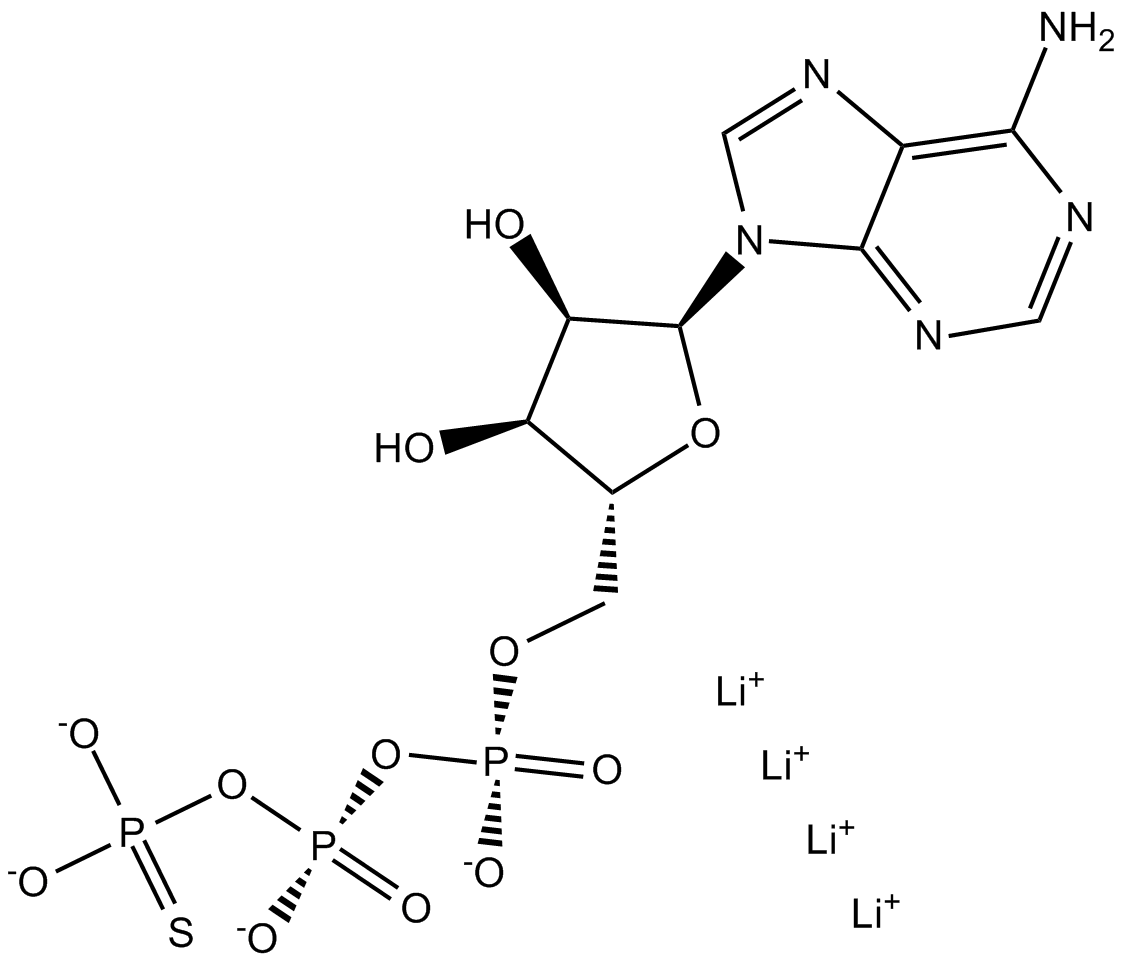ATPγS tetralithium salt (Synonyms: ATPγS) |
| Catalog No.GC12574 |
ATPγS (tetralithium salt) is a substrate for the nucleotide hydrolysis and RNA unwinding activities of eukaryotic translation initiation factor eIF4A.
Products are for research use only. Not for human use. We do not sell to patients.

Cas No.: 93839-89-5
Sample solution is provided at 25 µL, 10mM.
Adenosine 5'-(γ-thio)-triphosphate (lithium salt) is a stable analog of ATP that acts as a potent agonist of G protein-coupled P2Y2 and P2Y11 receptors (pEC50 = 5.52 for P2Y11).[1] It has been used to identify kinase substrates, has been implemented as a reagent in the synthesis of DNA N-acetylglucosamine analogs, and can serve as a substrate for the RNA-stimulated nucleotide hydrolysis and RNA unwinding activities of eukaryotic initiation factor-4A.[2],[3],[4]
Reference:
[1]. Jacobson, K.A., Ivanov, A.A., de Castro, S., et al. Development of selective agonists and antagonists of P2Y receptors. Purinergic Signal. 5(1), 75-89 (2009).
[2]. Knowles, J.R. Enzyme-catalyzed phosphoryl transfer reactions. Annual Reviews of Biochemistry 49, 877-919 (1980).
[3]. Chrysogelos, S., Register, J.C., III, and Griffith, J. The structure of recA protein-DNA filaments. 2 recA protein monomers unwind 17 base pairs of DNA by 11.5 degrees/base pair in the presence of adenosine 5'-O-(3-thiotriphosphate). The Journal of Biological Chemisty 258(20), 12624-12631 (1983).
[4]. Peck, M.L., and Herschlag, D. Adenosine 5'-O-(3-thio)triphosphate (ATPγS) is a substrate for the nucleotide hydrolysis and RNA unwinding activities of eukaryotic translation initiation factor elF4A. RNA 9(10), 1180-1187 (2003).
Average Rating: 5 (Based on Reviews and 8 reference(s) in Google Scholar.)
GLPBIO products are for RESEARCH USE ONLY. Please make sure your review or question is research based.
Required fields are marked with *




















